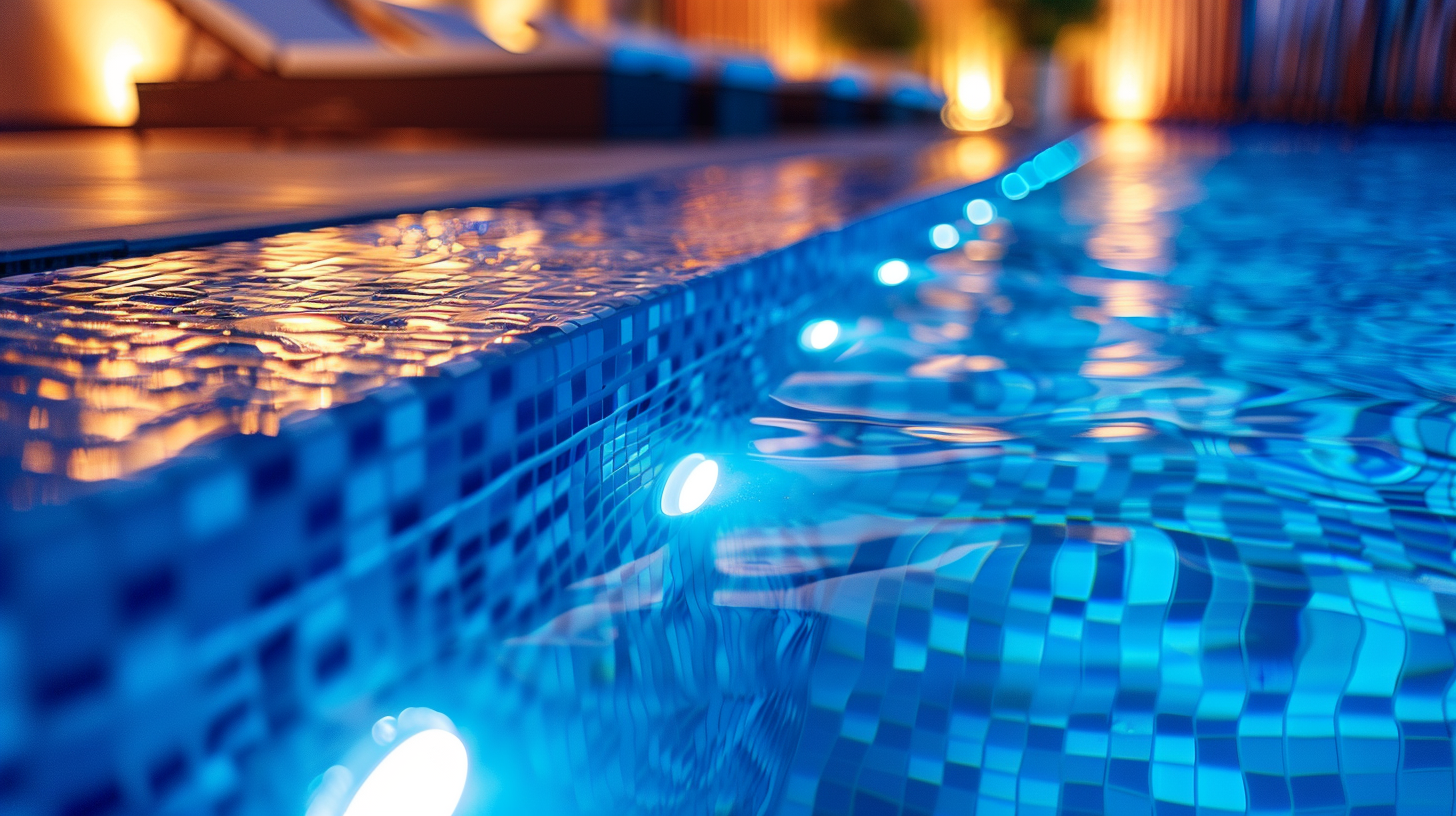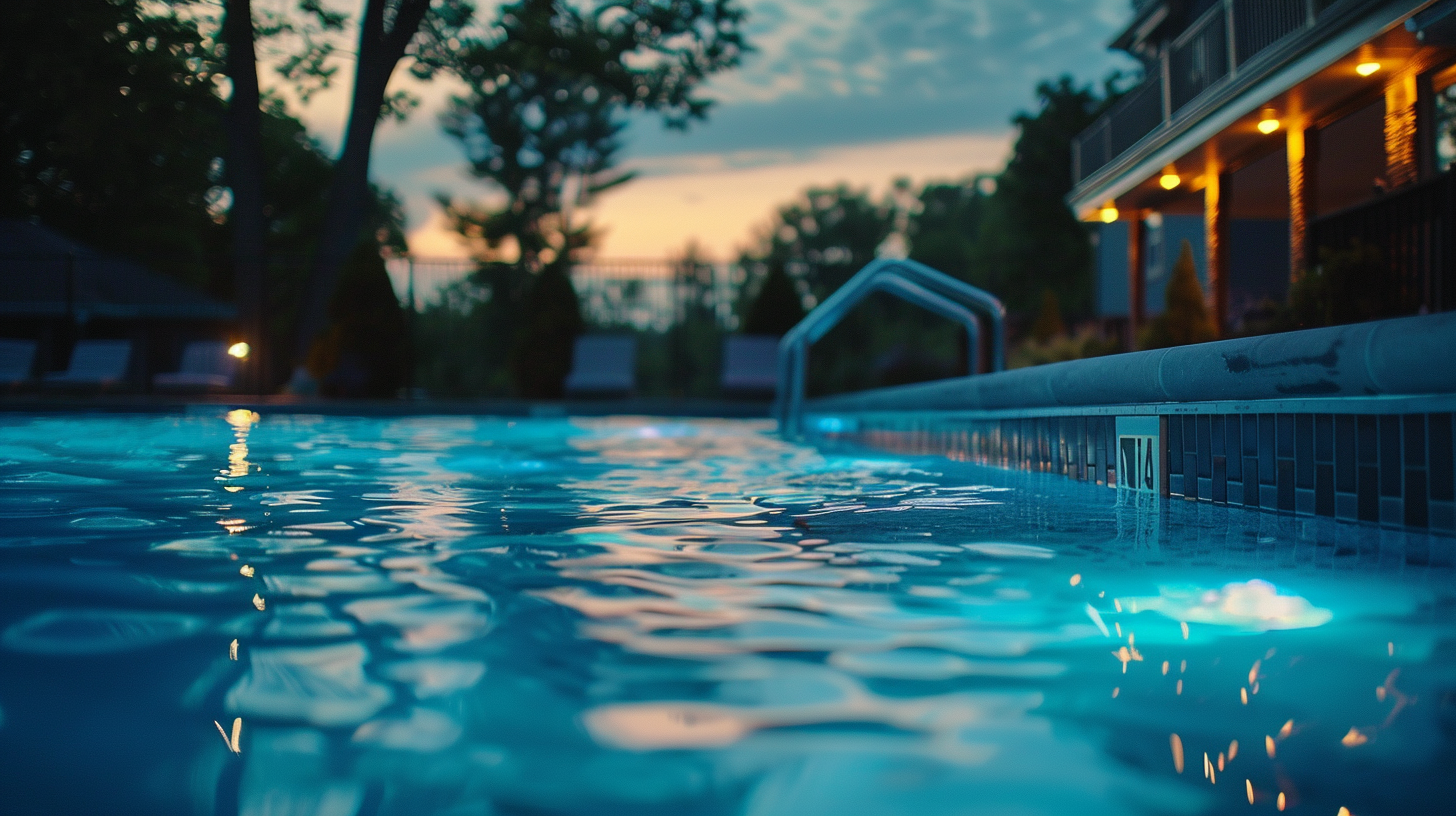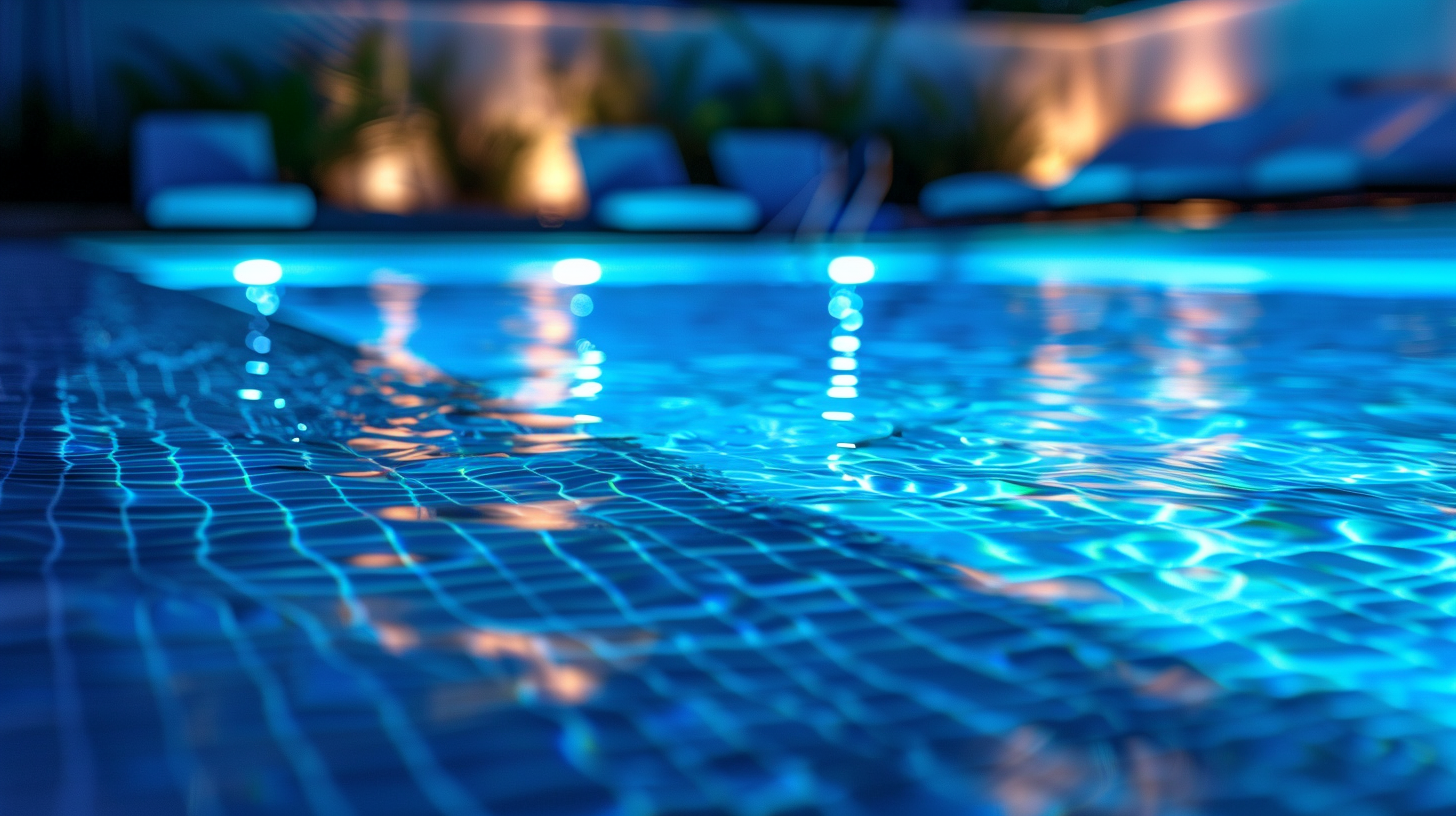Top features to consider when buying underwater pool lights
When it comes to buying underwater pool lights, there are several key factors to evaluate to ensure that you make the best choice for your swimming area. First on the list is the type of lighting technology. LED lights are highly recommended due to their energy efficiency and long lifespan. Another critical aspect to consider is the brightness and color options available. Some lights offer a range of colors and brightness levels, allowing you to customize the ambiance of your pool.
Durability is another major factor. The lights should be made from high-quality materials that can withstand chlorine, salt, and other chemicals found in pool water. Additionally, checking the manufacturer’s warranty can give you peace of mind, ensuring that your investment is protected against defects.
Don’t forget to evaluate the level of energy efficiency the pool lights offer. Many top features now include smart technology that allows you to control the lights via a smartphone app, adding convenience and reducing energy consumption when the lights are not needed.
Lastly, consider the cost but look beyond the initial price. While cheaper options may save you money upfront, they may not offer the same longevity and performance as more expensive, high-quality models.
Brightness and color options
One of the most exciting aspects of buying underwater pool lights is the array of brightness and color options available. Imagine turning your backyard pool into a vibrant oasis with just the flip of a switch! Whether you’re hosting a nighttime pool party or enjoying a quiet evening swim, the right lighting can set the perfect mood.
Brightness levels play a crucial role in the overall ambiance and functionality of your pool area. High brightness options are excellent for ensuring that the pool remains well-lit and safe for swimmers, while lower brightness settings can create a more relaxed and intimate atmosphere. Some top features in modern pool lights include adjustable brightness levels, offering the flexibility to switch between a brightly lit pool and a softer glow.
Color options, on the other hand, bring an entirely new dimension to pool lighting. Today’s pool lights often come with an RGB (Red, Green, Blue) spectrum, allowing you to mix and match colors to suit any occasion. You can opt for a tranquil blue to mimic the ocean, a warm orange for a sunset effect, or even vibrant purples and pinks for a festive feel. Some advanced pool lights also include preset lighting modes like a gentle fade, flashing lights, or a dynamic color-changing sequence, enhancing the overall experience.
If customization is high on your priority list, you might want to explore smart lighting systems. These systems often come with an app that lets you control not just the on/off switch, but also the brightness and color settings directly from your smartphone. You can even program different lighting scenes for various times of the day or special events, adding a touch of sophistication to your poolside gatherings.
Of course, it’s also worth considering the color quality and consistency. High-quality pool lights tend to offer consistent, vibrant colors without uneven patches or dim spots. This reliability is especially important if you plan to use multiple lights to create a cohesive look. Consulting user reviews and expert recommendations can give you an idea of which brands offer the best performance in this regard.
Energy efficiency and longevity
When deciding on which pool lights to purchase, scrutinize their energy efficiency and longevity. These qualities are absolutely crucial not just for reducing your environmental footprint but also for ensuring that your investment stands the test of time. Opting for energy-efficient underwater pool lights can translate to significant savings on your electricity bill. LED lights are particularly noteworthy in this regard. Unlike incandescent or halogen bulbs, LEDs require far less energy to produce the same amount of light, making them a smart choice for budget-conscious and eco-friendly consumers alike.
LED lights also boast an impressive lifespan, often lasting up to 50,000 hours or more. This means fewer replacements and less maintenance over the years, effectively reducing long-term costs. When evaluating LED options, look for high lumens-per-watt ratios as this indicates higher energy efficiency. Some advanced models even feature intelligent energy management systems, automatically adjusting the light intensity based on the ambient conditions to further save power.
Besides energy efficiency, the durability and longevity of your pool lights are equally important. The underwater environment is challenging, with constant exposure to water, chlorine, and other pool chemicals that can quickly degrade inferior products. Therefore, it’s vital to choose lights made from high-quality, corrosion-resistant materials such as stainless steel or durable plastics like polycarbonate. This ensures not only a longer operational life but also keeps them looking good as new for years to come.
Warranty is another significant consideration when evaluating the longevity of underwater pool lights. A comprehensive warranty can offer peace of mind, guaranteeing that any premature failures or defects will be addressed at no extra cost to you. Many top manufacturers offer extensive 2 to 5-year warranties, covering everything from electrical components to physical damage. This is particularly useful in a pool setting, where any issues typically require underwater maintenance and can be more complex and costly to resolve.
Additionally, some of the top features available today include advanced coatings and sealing techniques that further boost the longevity and performance of your pool lights. Waterproofing technologies such as IP68 rating ensure that the lights can operate flawlessly even when submerged for extended periods. This is just one aspect where investing in high-quality pool lights pays off, as you can expect consistent and reliable performance without frequent replacements.
Smart pool lights take energy efficiency and longevity to the next level. Integrating seamlessly with home automation systems or controlled via a smartphone app, they allow you to customize operating schedules and dimming levels. This means the lights only consume power when actually needed, avoiding unnecessary usage and thus extending their lifespan. Additionally, smart diagnostics can alert you to any potential issues before they become major problems, ensuring that your pool area remains a vibrant and safe haven for relaxation and entertainment.
When buying underwater pool lights, it’s crucial to weigh not only the initial cost but also the long-term savings and durability. Prioritizing energy efficiency and longevity ensures that you enjoy beautifully illuminated pool parties and serene evening swims for many years to come, without the hassle of constant maintenance or high electricity bills.
Installation process and compatibility
When it comes to the installation process, it’s essential to select pool lights that are straightforward to install and compatible with your existing system. Many modern pool lights are designed for easy installation, allowing homeowners to set them up without requiring professional assistance. For example, some lights come with plug-and-play capabilities that simplify the process significantly. However, there are technical details you should be aware of to ensure a seamless setup.
First, consider the type of light fixture. Retrofit kits are a popular choice because they allow you to upgrade your current lighting system without needing to overhaul the entire setup. This makes them an excellent option for those who want to replace old, inefficient lights with modern, energy-efficient LED models. These kits often come with step-by-step instructions and all the necessary hardware, including gaskets, rubber seals, and mounting brackets.
Compatibility is another crucial factor. Before purchasing, verify that the lights are compatible with your pool’s existing electrical system and control mechanisms. Check the voltage requirements to ensure they match your current system, typically either 12V or 120V. Using the wrong voltage can not only damage the lights but also pose safety hazards. Additionally, if you have a smart home system, make sure the lights can integrate seamlessly. Many top features in modern pool lights now offer compatibility with popular smart home platforms like Amazon Alexa, Google Home, and Apple HomeKit, enabling you to control the lights via voice commands or integrated apps.
For a smooth installation, it’s advisable to prepare an installation checklist. Here’s an example table to consider:
| Step | Description |
|---|---|
| 1. Turn Off Power | Ensure the pool’s power supply is completely switched off to avoid any electrical hazards. |
| 2. Remove Old Light Fixtures | Carefully take out the old light assemblies, making sure to follow any specific removal instructions from the manufacturer. |
| 3. Clean Mounting Area | Clean the niches thoroughly to remove any debris or algae buildup, ensuring a secure fit for the new lights. |
| 4. Install New Gaskets and Seals | Install new rubber gaskets and seals to prevent water from entering the electrical components. |
| 5. Connect Wiring | Follow the wiring instructions carefully, connecting the new lights to the electrical system while ensuring waterproof connections. |
| 6. Mount and Secure Lights | Place the new light fixtures into the niches and secure them with mounting brackets or screws as needed. |
| 7. Test and Adjust | Restore power and test the lights. Make any necessary adjustments for optimal performance and alignment. |
It’s also essential to ensure that all seals and gaskets are installed correctly to maintain the waterproof integrity of the fixtures. Waterproof ratings such as IP68 are an indicator of the lights’ ability to withstand prolonged submersion. Proper sealing is critical, especially for submerged installations, to prevent water from coming into contact with electrical components and potentially causing malfunctions or safety risks.
In case you’re dealing with complex installations or specific requirements, consulting the manufacturer’s installation guide or hiring a professional electrician may be wise. They can help ensure that everything is installed according to code and runs smoothly, reducing the likelihood of future issues.
Overall, when buying pool lights, prioritizing ease of installation and system compatibility can save you significant time and trouble, allowing you to enjoy an illuminated pool more quickly and effortlessly.
Safety and waterproof ratings
When considering underwater pool lights, safety and waterproof ratings are paramount aspects that should never be overlooked. A high-quality pool light must perform safely and reliably under challenging conditions. One of the most vital indicators of this is the Ingress Protection (IP) rating, particularly the IP68 rating, which signifies that the product is both dust-tight and can be submerged in water beyond one meter. This rating ensures that the pool lights can withstand prolonged exposure to water without any risk of malfunction or safety hazards.
It’s crucial to confirm that the pool lights you’re buying meet or exceed these stringent waterproof ratings. This ensures you invest in top features that guarantee exceptional performance even when submerged for extended periods. Cheaper alternatives might cut corners on this aspect, leading to potential electrical hazards and frequent replacements. Always look for products that explicitly state their IP ratings and are certified by reputable standards organizations.
Safety considerations extend beyond waterproof ratings. Electrical safety is another pivotal factor, especially given the wet environment. Pool lights should adhere to the latest safety standards and certifications, such as UL (Underwriters Laboratories) or CE (Conformité Européenne). These certifications confirm that the lights have undergone rigorous testing and comply with safety regulations, minimizing the risk of electrical shock or fire hazards.
Another key safety feature to look for is thermal protection. Pool lights, particularly those with high wattage, can generate significant heat. Lights with built-in thermal protection will automatically shut off if they overheat, preventing potential damage to the fixture and enhancing overall safety. Not only does this extend the life of your pool lights, but it also provides peace of mind during extended use.
LED pool lights, known for their energy efficiency and long lifespan, often incorporate these essential safety features. They produce less heat compared to traditional incandescent bulbs, making them a safer option for underwater use. Additionally, many LED lights are built with robust materials such as stainless steel or high-quality plastic, further enhancing their durability and safety under water.
Ensuring that pool lights are properly installed is another critical element of safety. Faulty installation can negate even the best safety features. Follow the manufacturer’s guidelines closely or hire a professional to ensure all electrical connections are watertight and secure. Proper installation not only guarantees optimal performance but also significantly reduces the risk of electrical hazards.
In summary, while the aesthetic appeal of underwater pool lights is important, their safety and waterproof ratings are non-negotiable. Investing in lights that meet high safety standards and robust waterproof ratings ensures that your pool remains a safe, vibrant, and enjoyable space for all to enjoy. From IP ratings to electrical and thermal protections, prioritizing these top features will provide a secure and stunningly lit swimming experience.


